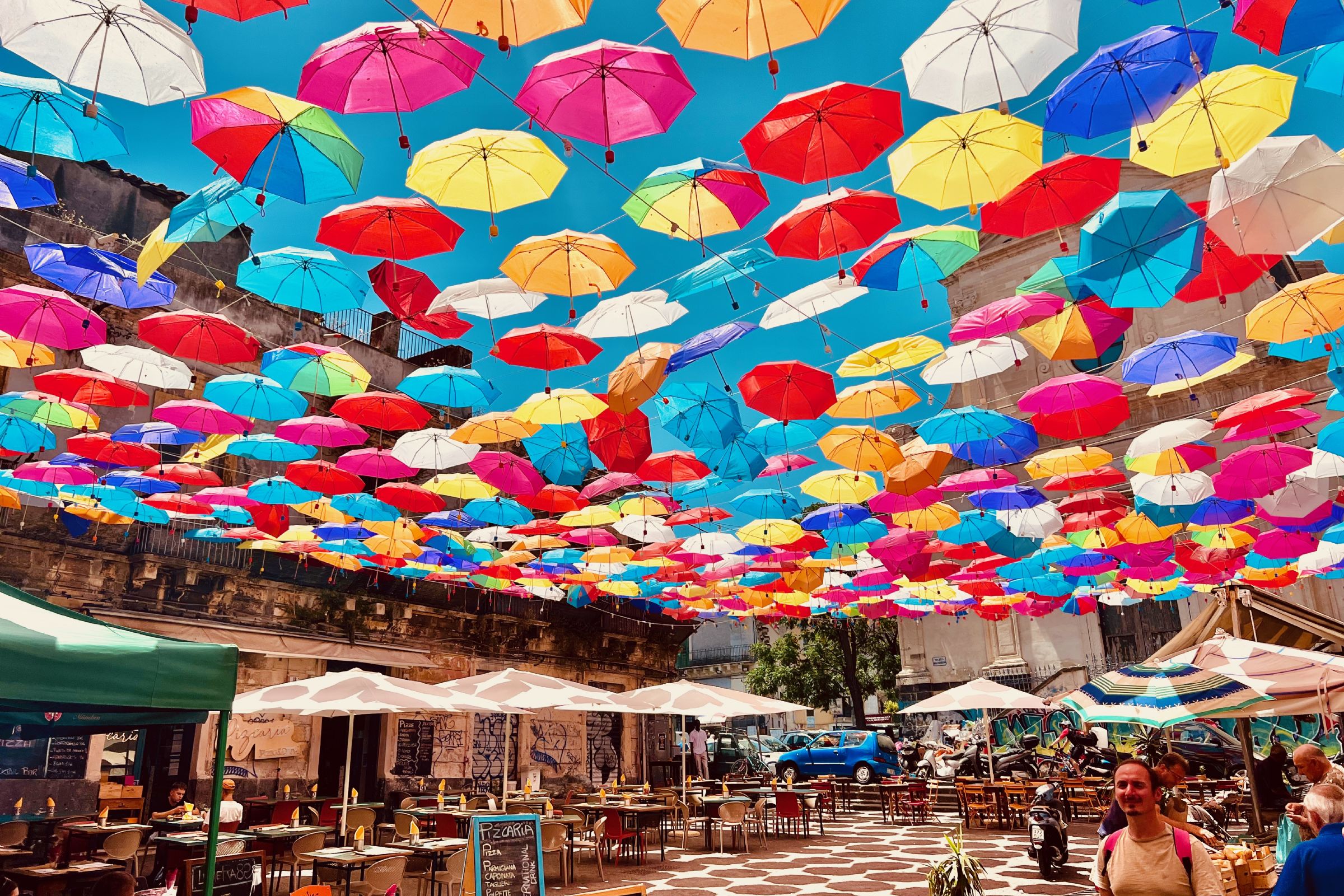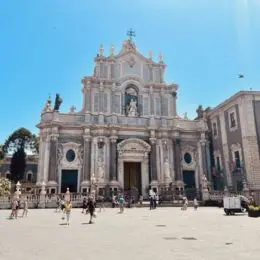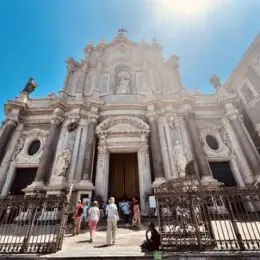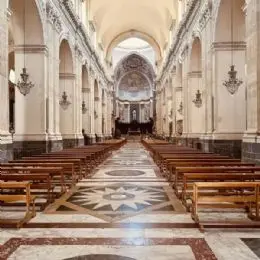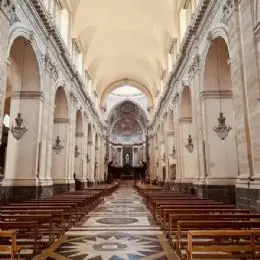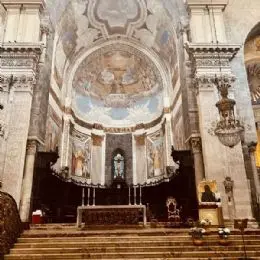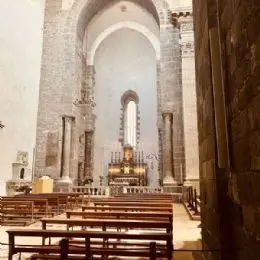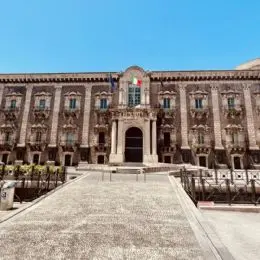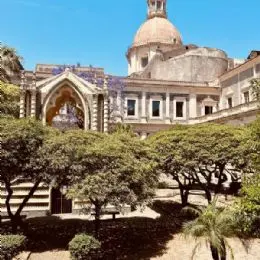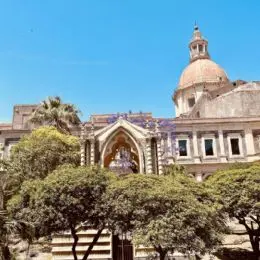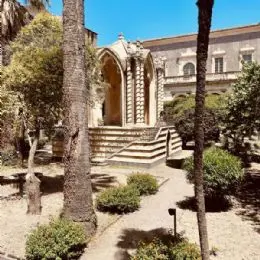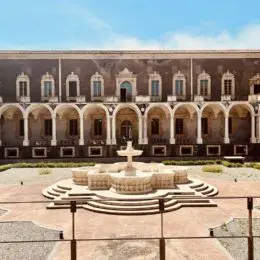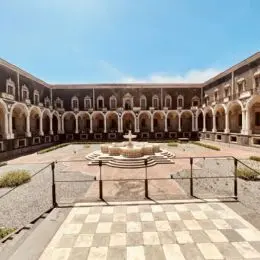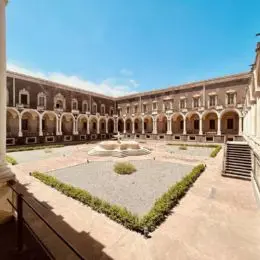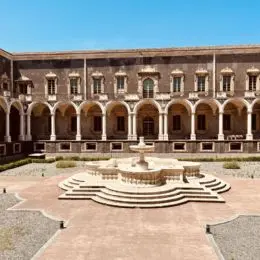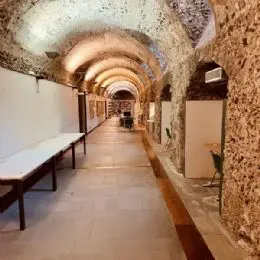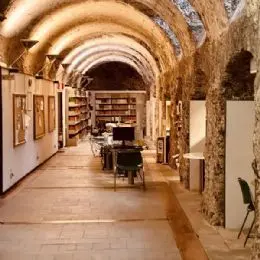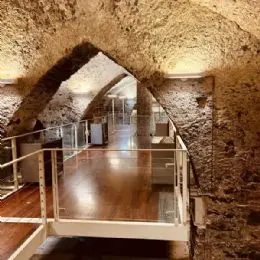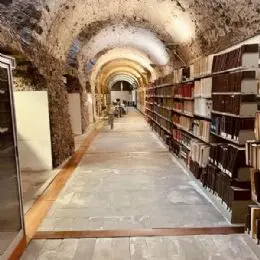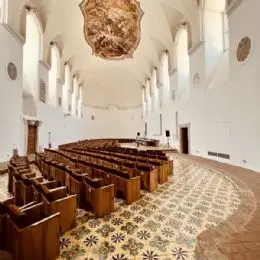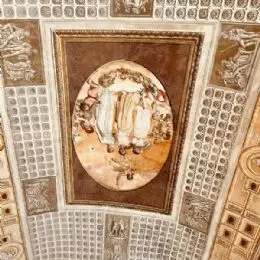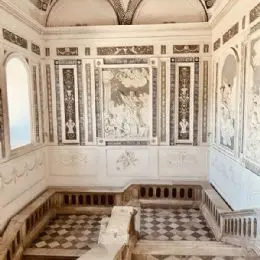Catania
Located in the most fertile areas of the island between the Ionian Sea and the southern slopes of Etna, from whose central crater is only 28 kilometers away, Catania is the second largest city in Sicily and the arrival point of many tourists thanks to the presence of airport located on the outskirts of the city. A lively and vibrant city, with grandiose architecture resulting from the reconstruction following the earthquake that devastated the entire region in 1963. The eighteenth-century architect Giovanni Battista Vaccarini gave the city a noble and sumptuous appearance, next to the Roman ruins encrusted with lava some of the most beautiful examples of Sicilian Baroque survive, while the crowded streets and squares and pubs full of people make Catania the city livelier than Sicily.
The main commercial street of the city is its backbone, Via Etnea, a place where department stores and outlets of large chains, designer items, boutiques and brands follow one another. Just before Villa Bellini, Via Pacini specializes in low-priced clothing, footwear, underwear and accessories and merges at the opposite end with the unmissable Fera or Luni market (Piazza Carlo Alberto), fruit, vegetable and fish from this market occupy the square in front of the church, while the surrounding streets offer gadgets and low-cost products.
In Via Vittorio Emanuele II there are some ethnic shops that sell carved objects, beads and fabrics. On the other side of Piazza Duomo, in the arcades of Piazza Uzeda, there are two or three Sicilian souvenir shops well stocked with puppets, postcards, ceramic painted carts and almond wine. Finally, in the old Palazzo Biscardi, behind the Cathedral, you can find Nonna Vincenza, a famous traditional shop that sells artisan packaged sweets.
What to see in Catania
Piazza del Duomo
Central square of Catania, has been declared a World Heritage Site by UNESCO. Surrounded by splendid palaces, it is a sumptuous example of the Baroque style in a Catania key, characterized by the contrast between lava stone and limestone. In the center of the square is the most memorable monument of the city "The Elephant Fountain".
Cathedral of Sant'Agata, Catania
This curious statue is made up of a Roman lava elephant, symbol of the city, surmounted by an unlikely Egyptian obelisk. The elephant is called 'Liotru' by the people of Catania, because it is identified with the necromancer Eliodoro (7th century AD), who apparently earned a living by transforming people into animals, and therefore believed to possess magical powers that appease the incessant activity of 'Etna.
In front of the fountain stands the Cathedral of Sant'Agata (Piazza del Duomo, free admission) with an extraordinary marble facade with two rows of columns, coming from the Roman amphitheater. The interior houses the relics of the holy master of the city.
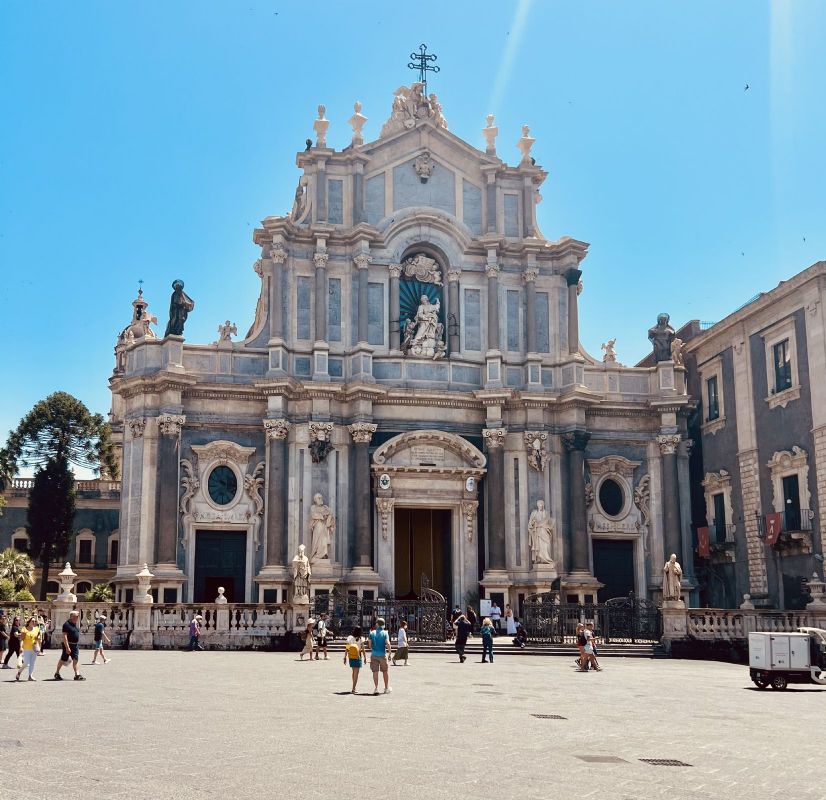
Today the most picturesque spectacle of the city is staged at "La Pescheria" (Piazza del Duomo, 5-11), the lively fish market, near the food market (Piazza del Duomo, all day) the cries of the fishmongers and the wooden tables filled with fresh fish offer an unforgettable sight. “La Fontana dell'Amenano”, located at the entrance to the food market, a tribute by Tito Angelini to the river that once flowed on the surface, on whose banks the Greeks founded the city of Katane.
East of Piazza del Duomo
A few blocks north - east you will find the enchanting Piazza Bellini dominated by the Massimo Bellini Theater (via Perrotta 12).
Named after Bellini, the most famous Catania in the world, father of contemporary music, it is one of the largest theaters in Europe. Further east in Viale Africa are the sulfur refineries, “Le Ciminiere”. The recovery of the refineries led to the birth of a cultural center, hosting a permanent exhibition of relics, art and photographs from the Second World War.
Ursino Castle
If you head south from Piazza del Duomo, through the majestic Porta Uzeda, and go down to Piazza Federico di Svevia, you will encounter the mighty fortifications of the Ursino castle built in the thirteenth century by Frederick II.
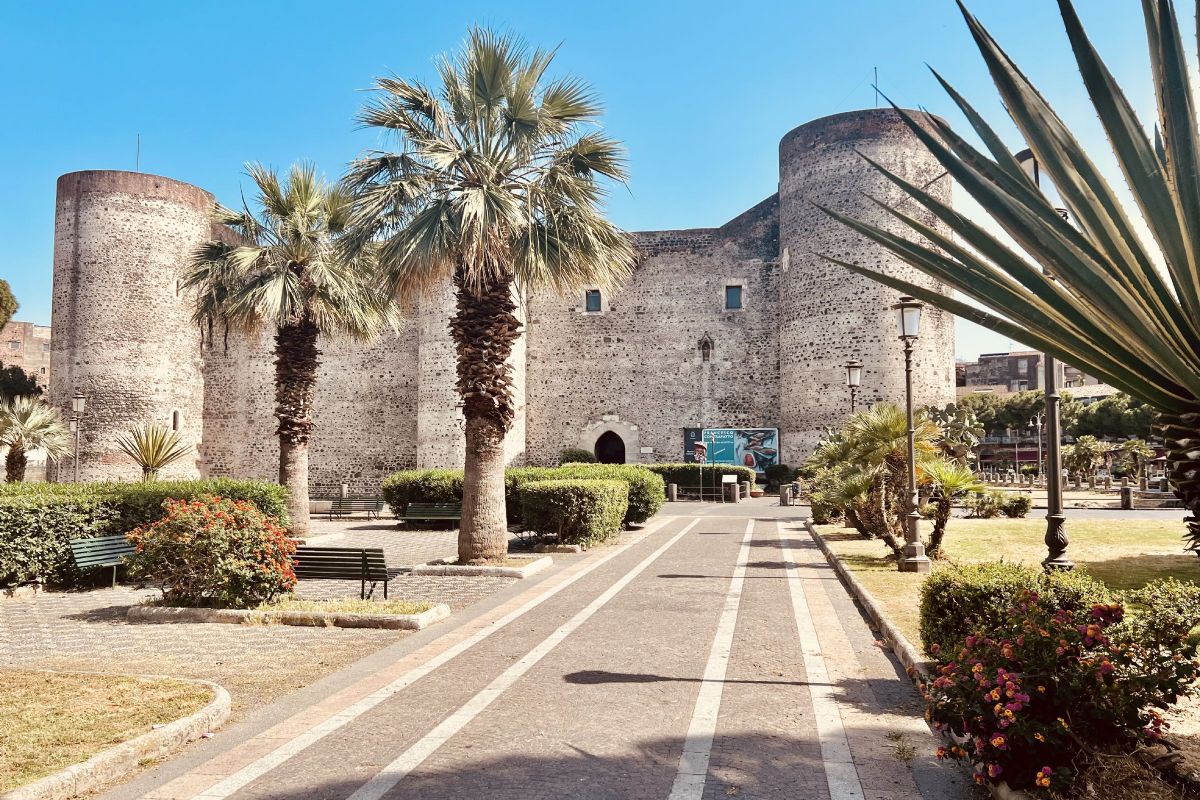
The fortress once stood on a promontory jutting out into the sea, but was surrounded by the lava of 1669 which filled the moats away from the sea. The castle is home to the "Civic Museum" (Piazza Federico di Svevia, free admission), which houses the precious archaeological collection of the Biscari princes, the most powerful family of Catania, the collections from the monastery of San Nicolò and artifacts from the Roman era.
West of Piazza del Duomo
The most interesting street in the city is perhaps Via Crociferì. At its southern end, in Piazza San Francesco, is the “Museo Belliniano” (Free admission), a small museum set up in the home of the Bellini family, with a collection of memorabilia and mementos from the composer's life.
In front of the museum stands the eighteenth-century "Church of San Francesco" and a little further on is the "Arch of San Benedetto", built by the Benedictines in 1704.
Curiosity
According to a legend, the arch was built in just one night to circumvent a municipal ordinance that prohibited its construction for seismic reasons.
After the arch on the left is the imposing "Church of San Benedetto", built between 1704 and 1713, inside you can admire stuccoes of extraordinary elegance and precious marbles.
Beyond the church, near Via Crociferì, there are the ruins of the "Roman Theater", in a very bad state of conservation, and the Odeon (Via Vittorio Emanuele II 266, theater and odeon), a smaller theater that was used for the rpove.
Returning to Via Crociferì in the middle of the street on the right stands the "Church of San Giuliano", designed by Vaccarini. The convex facade creates an interesting optical effect.
Church of San Nicolò
In front of the church of San Giuliano begins the small via Gesuiti, which heads west until it reaches Piazza Dante and the largest church in Sicily, the Church of San Nicolò.
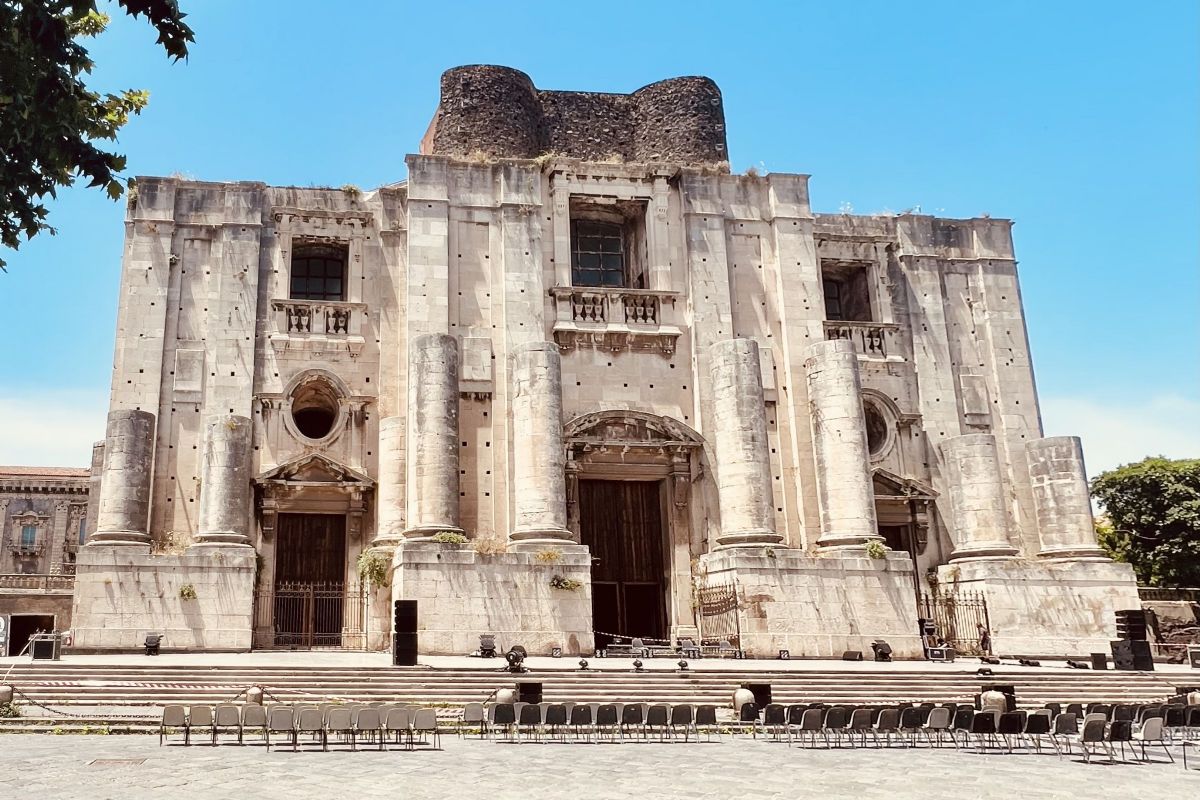
It was begun in 1687, but construction was blocked by the 1693 earthquake and later by technical problems related to its size - 105m long, 48m wide, with a 62m high dome. The church has remained unfinished, the exuberant façade with the mighty incomplete columns is in striking contrast with the exuberant decorations that adorn the other Baroque buildings of the city. The vast interior is equally unadorned, the long walls interrupted by a series of almost completely bare altars. The presbytery has a splendid organ, the work of Donato del Piano.
Behind the church is the Benedictine monastery of San Nicolò l'Arena, which is part of the same complex and was built in 1703 for the Benedictines, today the seat of the Faculty of Literature and Philosophy of the University of Catania. It is the second largest monastery in Europe and boasts some lovely internal cloisters and one of the most prestigious libraries on the island, with original shelves and an 18th century majolica floor.
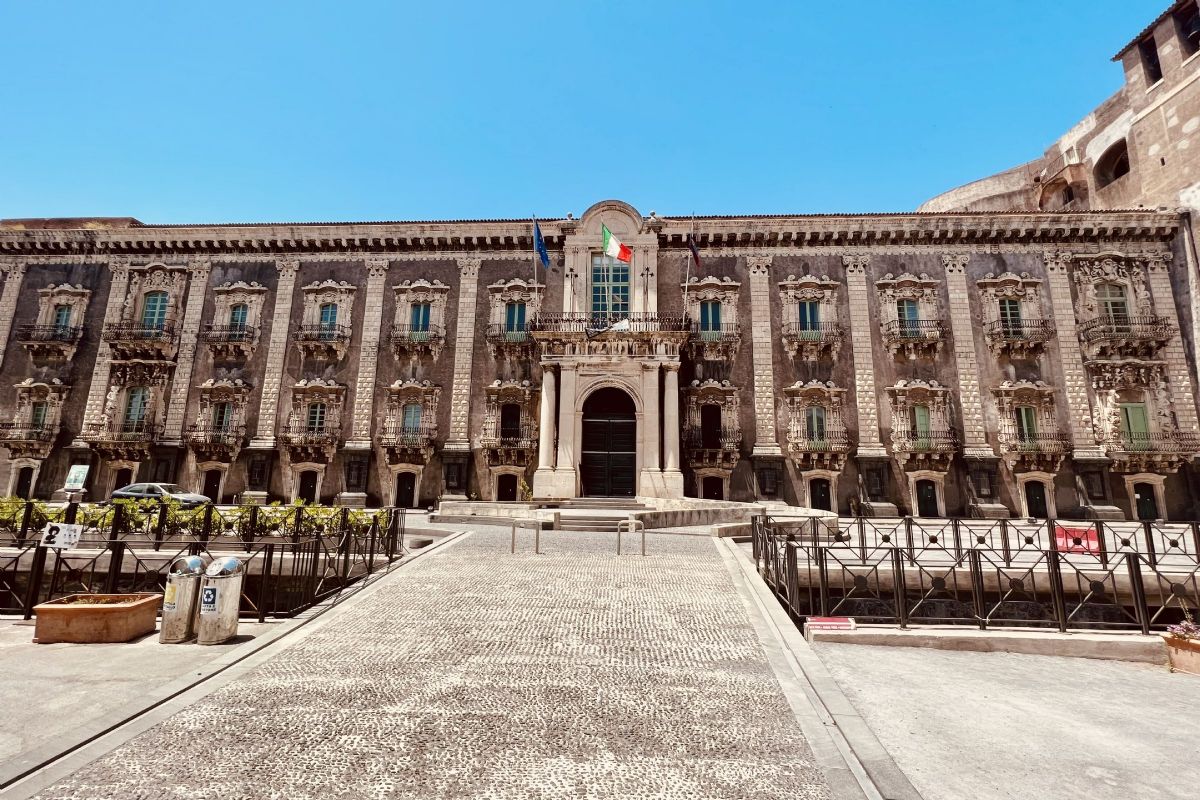
Via Etnea
It is the main urban artery that cuts the city from north to south, starts from Piazza del Duomo, crosses the city and reaches the foothills of Etna. Walking along via Etnea, a lively street with numerous shops and cafes, you reach Piazza Università, which houses the "University Palace" on the west side and the "Palazzo Sangiuliano" designed by Vaccarini, on the west side. Continuing north for 330 m you will find the large and modern Piazza Stesicoro, whose western side is dominated by the remains of the Roman amphitheater. In its heyday (around the 2nd century) it could accommodate 16,000 spectators and was second in size only to the Colosseum in Rome.
With a short walk in Piazza Stesicoro you reach the “Church of Sant'Agata al Carcere” (Free admission) where the environment indicated by historians as the cell in which the saint was imprisoned is located. Continuing north along Via Etnea and turn left behind the post office, where you will find Villa Bellini ”a public garden full of trees, numerous benches and a flower clock.
Parties and events
Feast of Sant'Agata : A million of Catania people and tourists follow the fercolo (the sedan chair on which the bust and the jewel-encrusted casket containing the saint's remains are placed) which is carried in procession along the main street of the city. During the festivities there is also a magnificent fireworks display. It takes place in February.
Catania music summer : Classical music festival which takes place in July.
Baroque Week : A week of Baroque music, historical reenactments and other performances in July.
Entertainment
Live music and night clubs
Unusual for Sicily, the streets of Catania are crowded until late hours, especially in summer, when it seems that half of the population goes out for a walk or to have dinner or a drink. Thanks largely to the presence of many university students, the restaurants are generally good value for money and the city boasts the best choice of bars and pubs on the island, some with live music. Furthermore, in the summer months the Municipality gives away the concert cafes, and the streets and squares of the historic center are closed to traffic. All the bars in the area occupy squares and alleys with their tables, and bands keep playing until the wee hours.
Theater
Massimo Bellini Theater: Ernesto Basile's art nouveau masterpiece, restored to its former glory by a skilful restoration, this theater stages opera performances, classical dance and concerts. Its program runs from October to May, tickets can be booked online.
How to reach Catania
Airplane
Catania airport, Fontanarossa ( www.aeroporto.catania.it ), is located 5km south-west of the city center and is served by national and European flights. To reach the airport, you can take a bus from the train station, and all major car rental agencies are present at the airport.
Bus
www.aziendasicilianatrasporti.it (also serves many smaller towns)
www.etnatrasporti.it
www.saistrasporti.it
Car and motorcycle
Catania can be easily reached from Messina along the A18-E45 motorway and from Palermo along the A19. From the highway, follow the signs for the center of Catania which will lead you to via Etnea. Traffic in the city is very heavy.
Boats
The ferry terminal is located south of the train station, along via VI Aprile.
Train
Frequent trains connect Catania with Messina and Syracuse, less frequent for Palermo and Agrigento. The private Circumetnea railway line goes around Etna, stopping in the towns and villages on the slopes of the volcano.
History of Catania
The relationship is very close between the city and the volcano regardless of the place and the way of accessing the locality. From Etna derives the extraordinary fertility of the countryside and the lavas with which the main monuments were built: black lava are the Roman Amphitheater, the medieval Cathedral, the Baroque palaces. Until a few decades ago, the contrast created by the volcano in the surrounding area of Catania was clearly visible: to the north citrus groves and gardens grown on the oldest lavas, to the north the desert formed by 989 million cubic meters of the famous eruption of 1669. city from the castle that ends the Messina - Catania motorway has the opportunity to clearly see the three phases of expansion of the residential nucleus : the historic center , an eighteenth-century construction marked in the profile by domes and bell towers, the nineteenth century expansion . and of the first twenty years of the twentieth that connects the city to the villages, the most recent plant that merges Catania with its ancient hamlets and the Etna municipalities.
Katane
It was founded by the Calcinese colonists during the oldest phase of the Greek colonization of Sicily, according to the testimony of Thucydides shortly after 729. The first settlement was built on a small hill which became the acropolis of the city, the place where today we find the church of San Nicolò and the Benedictine convent. The traces of the Greek Katane have vanished and even the news of historical sources is very scarce.
The achievements
In 476 the city was conquered by Hieron of Syracuse thus losing its autonomy, the inhabitants were deported and replaced with Syracusans and Peloponnesians and the name itself was changed to that of Aitna; only in 461 will the ancient inhabitants return and with them the name of Katane. The city will be conquered by the Romans in 263 BC at the beginning of the Second Punic War and subject to the payment of a tax; although it was destroyed in 123 by an eruption remembered by Orosio, it maintained a considerable wealth in the late republican and imperial ages testified by the considerable number of Roman buildings still visible today.
Spread of Christianity
During the period of the barbarian invasions there was a phase of decadence, the letter written by Cassiodoro on behalf of Theodoric in which he authorizes the Catanese to take building material of the amphitheater to repair the walls is famous. Reconquered by the Byzantines in 535 it passed under the rule of Islam during the 9th century, but it is with the Muslims that the agricultural landscape that characterizes the Catania area begins to take shape thanks to the importation of new crops, other irrigation techniques and the creation of a dense network of small streets. After the Norman conquest of 1071, the construction of the Cathedral began and with this one fixes what is still the city center today, the choice of the site was imposed by the need to control the port and to connect to the wall system
The Norman domination
The Norman conquest caused an economic crisis in Catania generated by the interruption of commercial traffic with the centers of North Africa and by the disintegration of the countryside: we return to the large estates and the territory was organized by new rural nuclei each gravitating around a monastery, new land owner. The anomalous concentration of powers was reinforced by Pope Urban II who established that the functions of abbot and bishop were united in the same person. Hence the enormous role played by the Benedictines in Catania's history. The economic crisis and depopulation were aggravated by the terrible earthquake of 1169.
Benedictine Monastery, Catania
